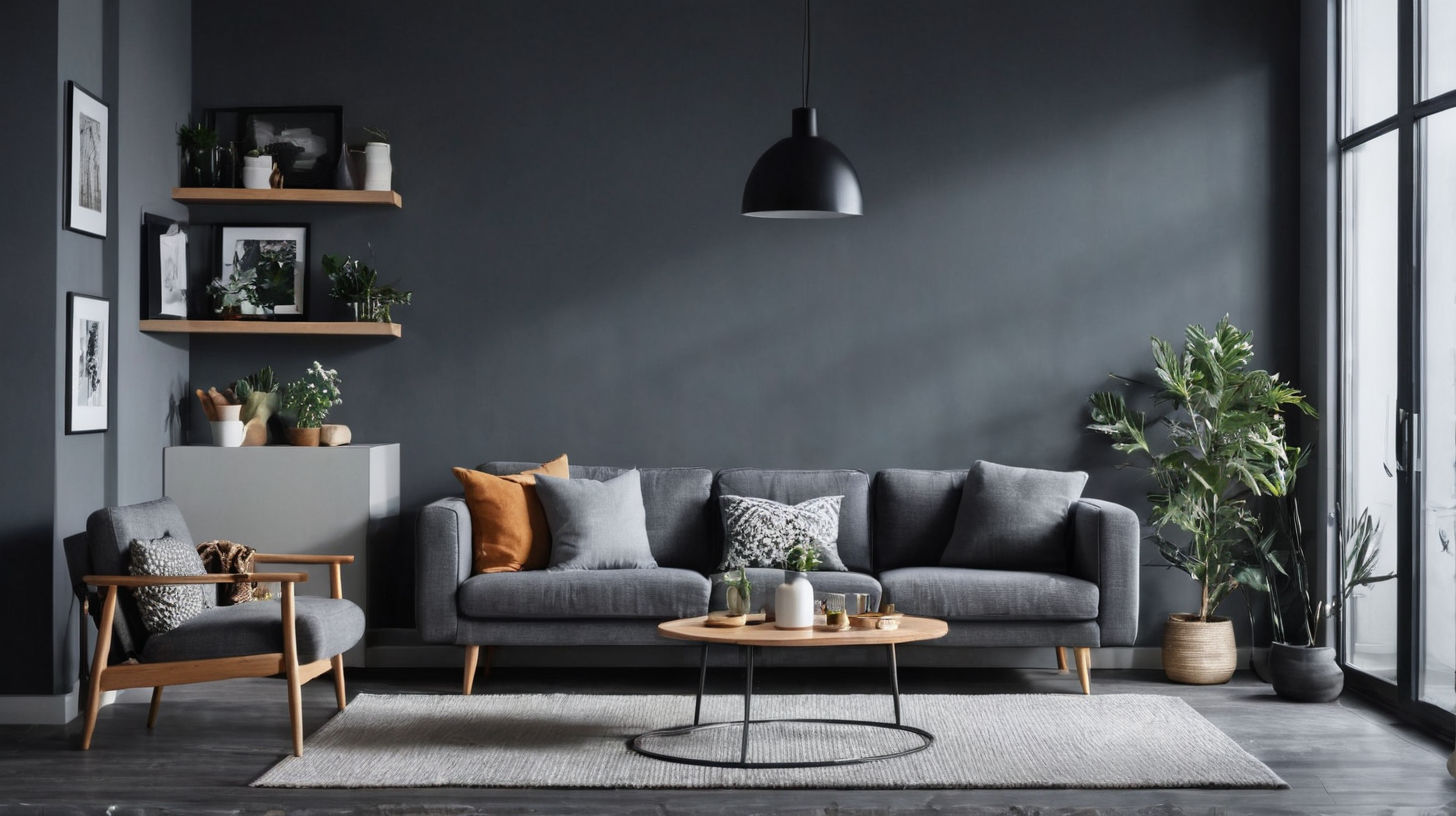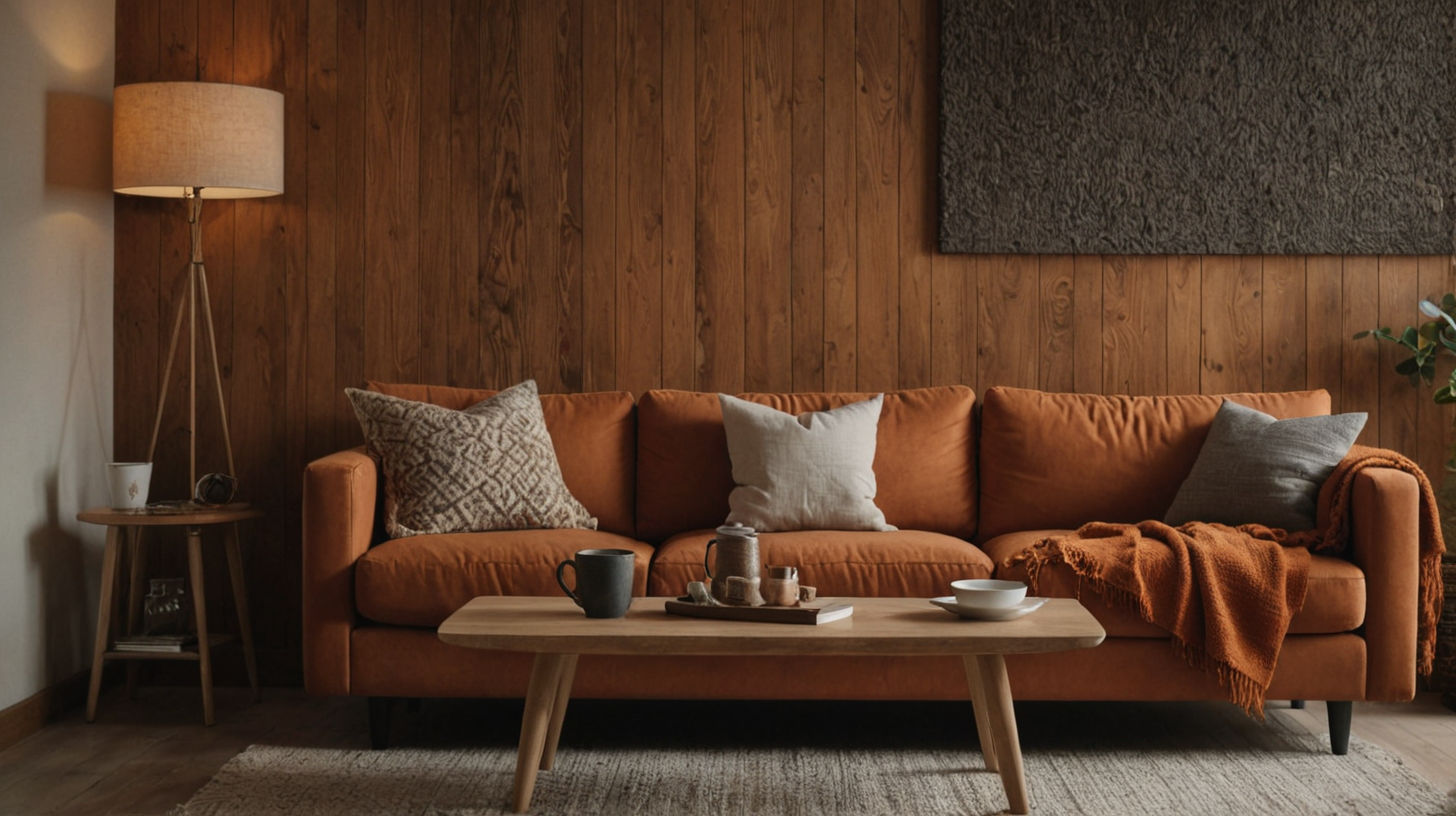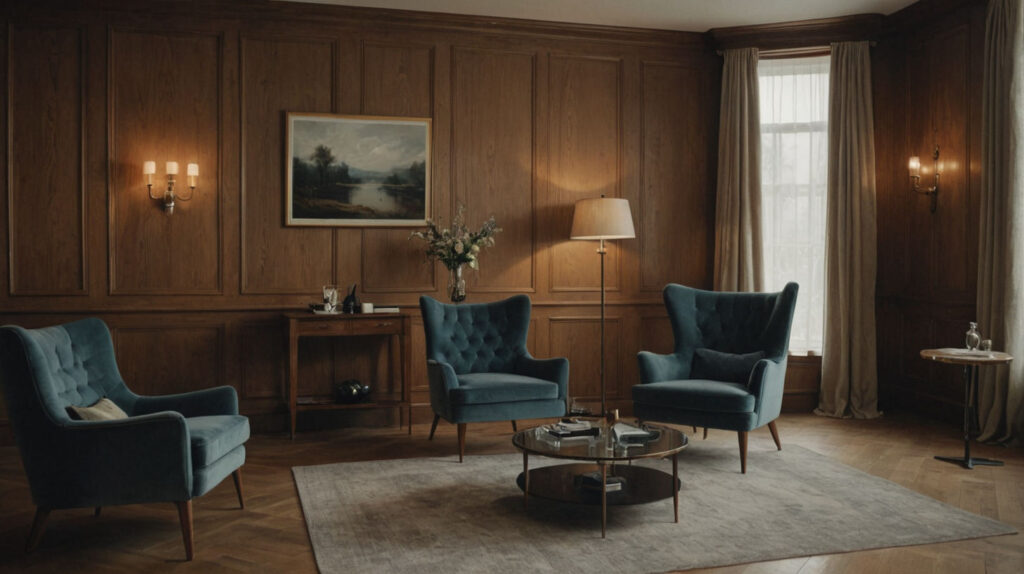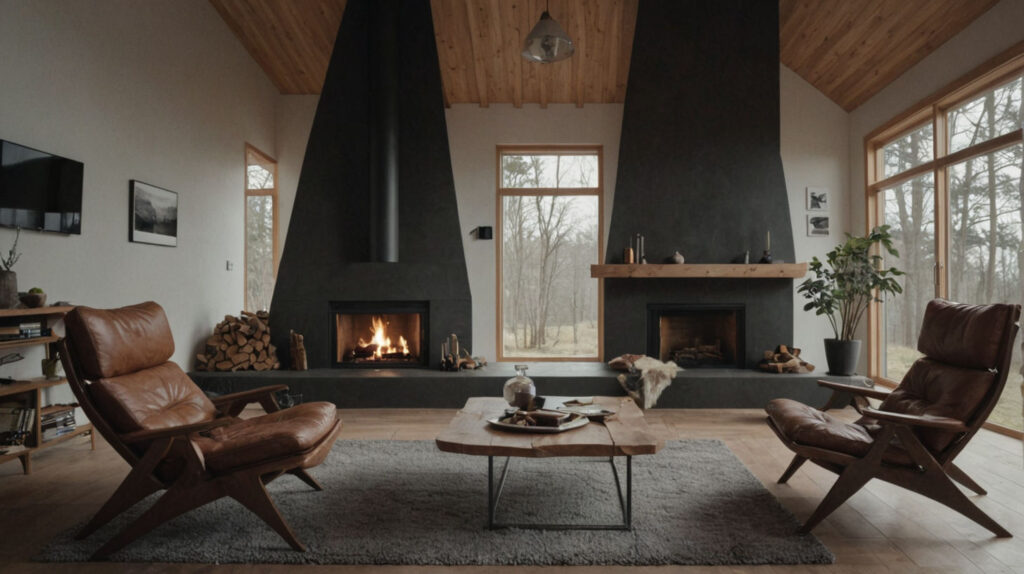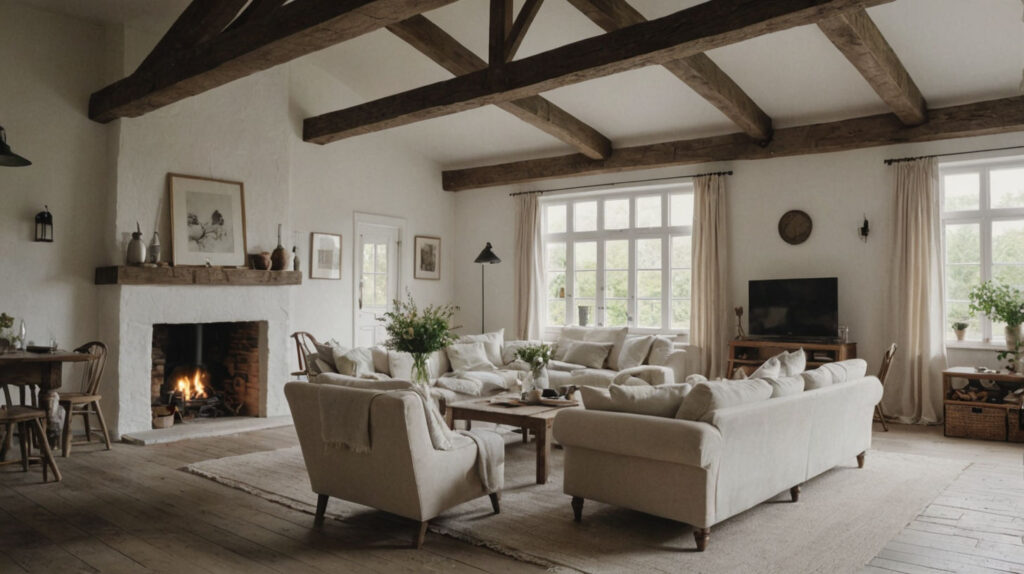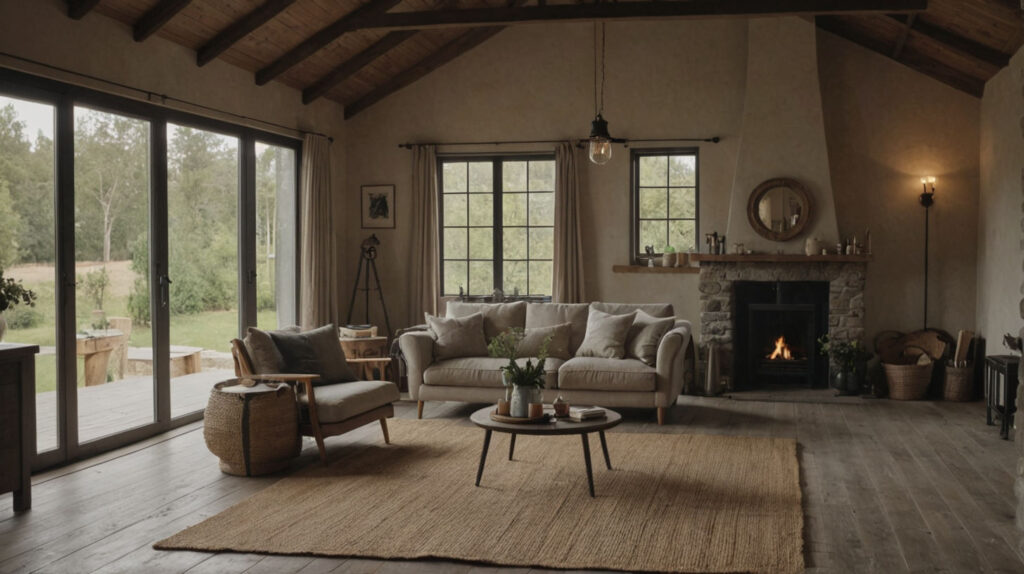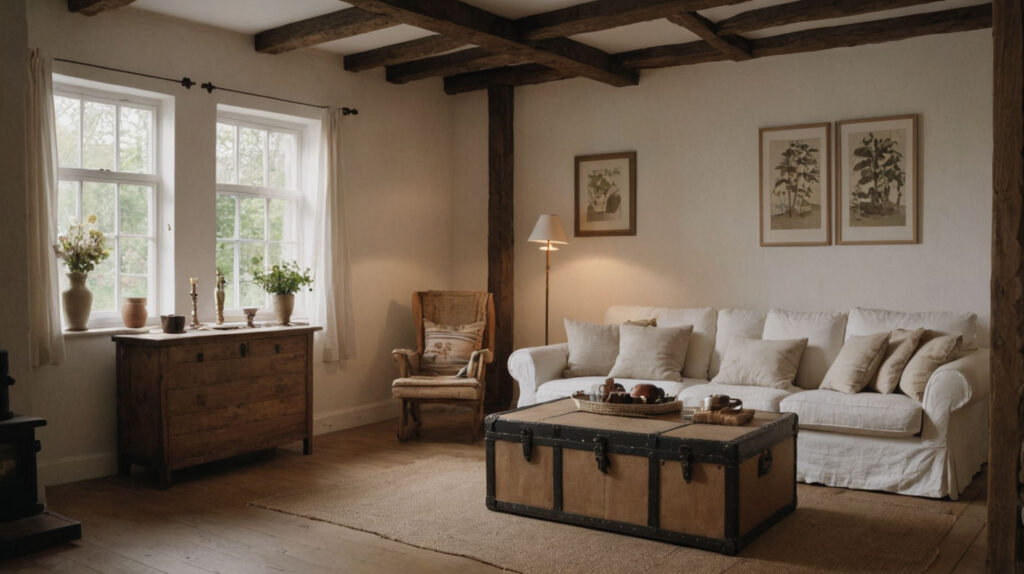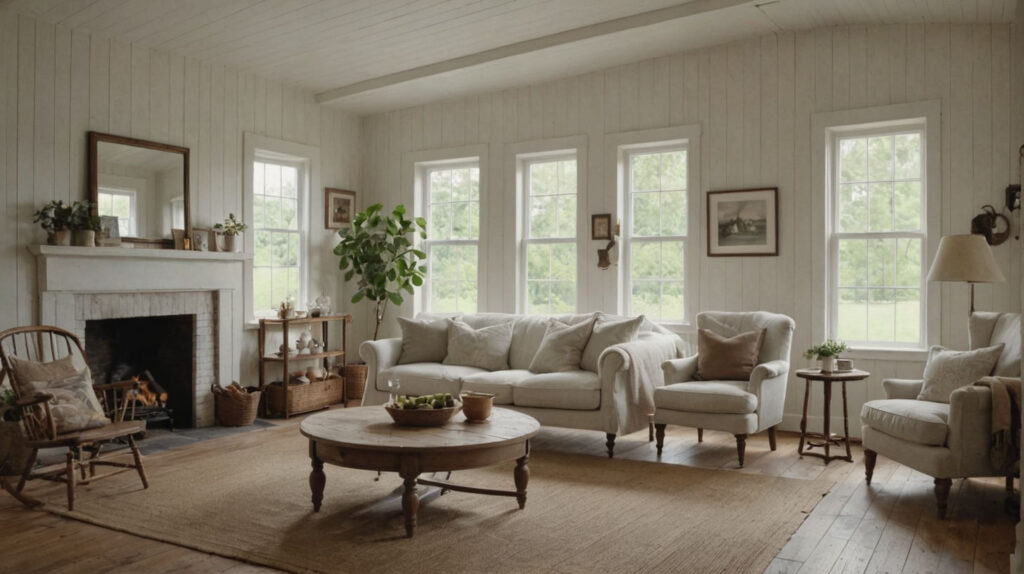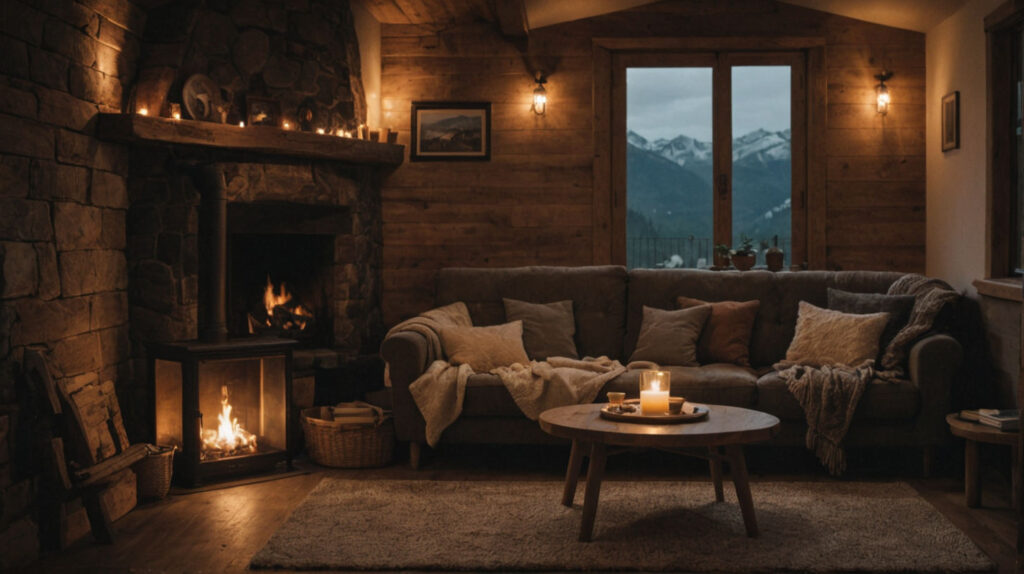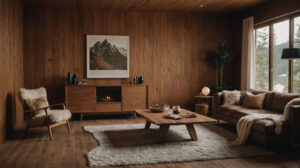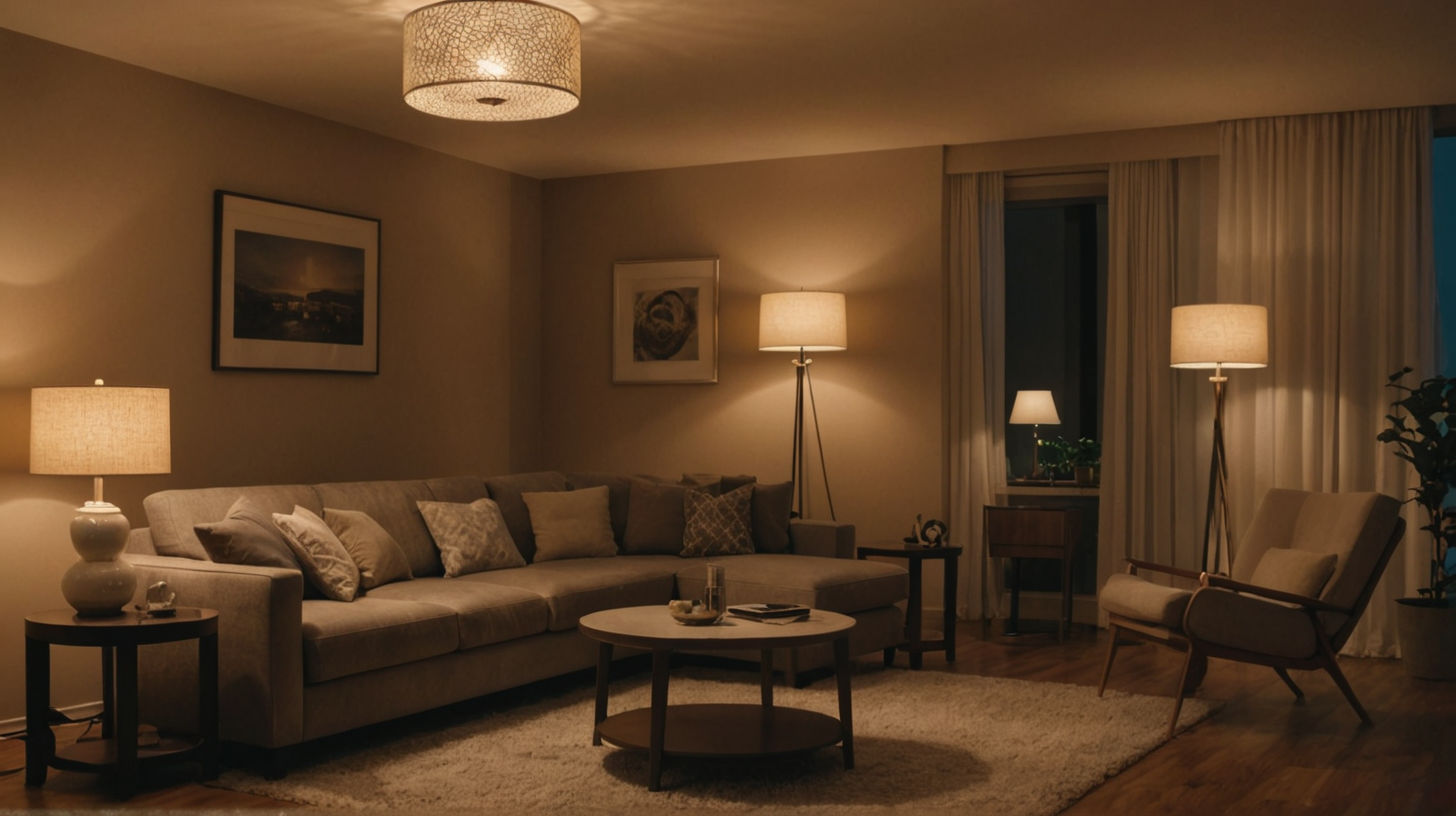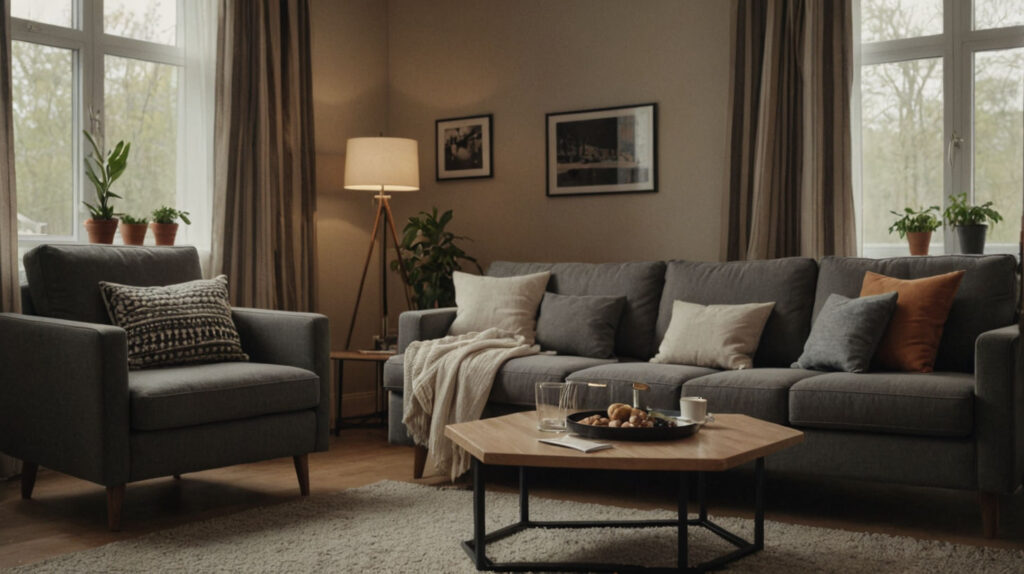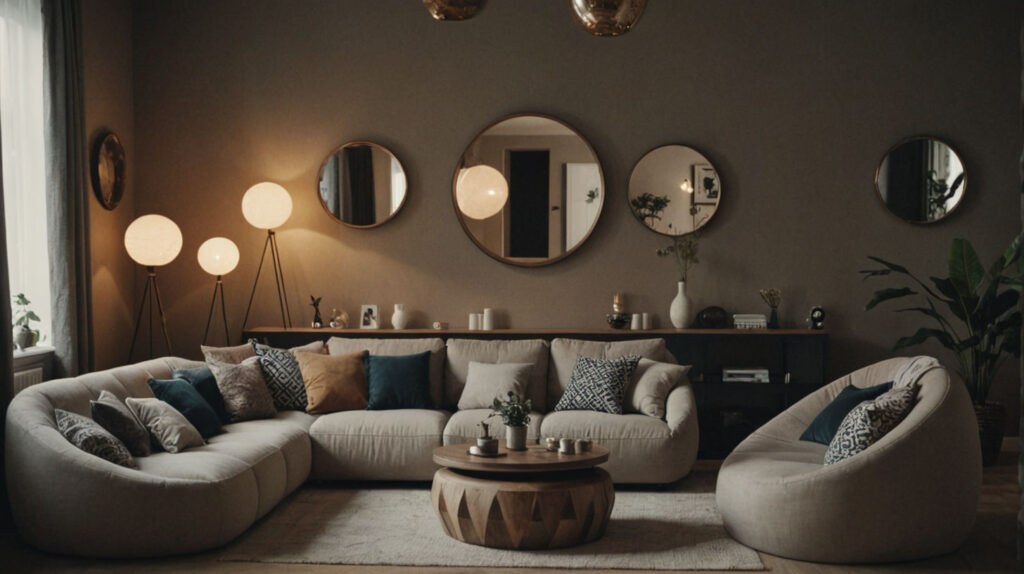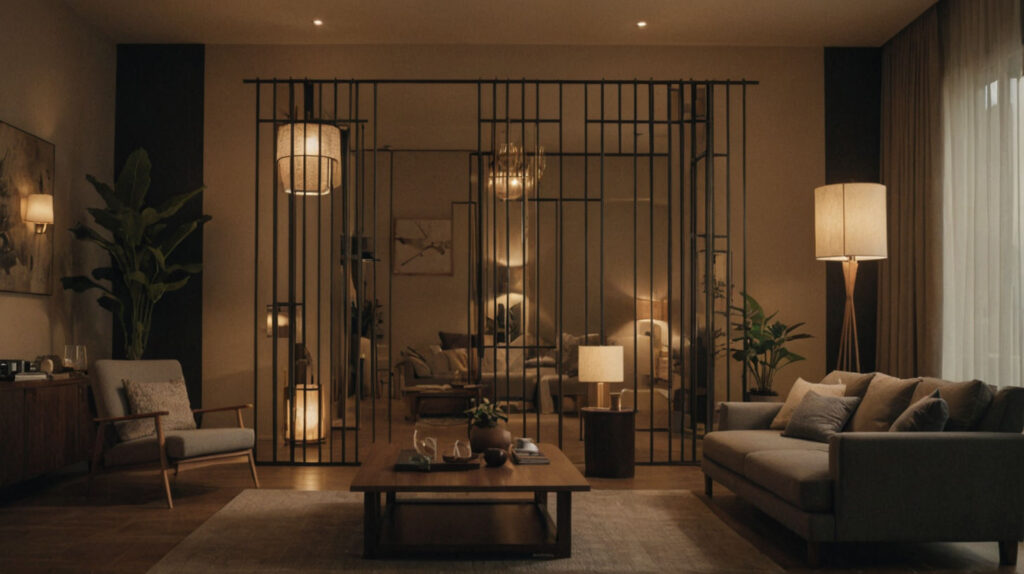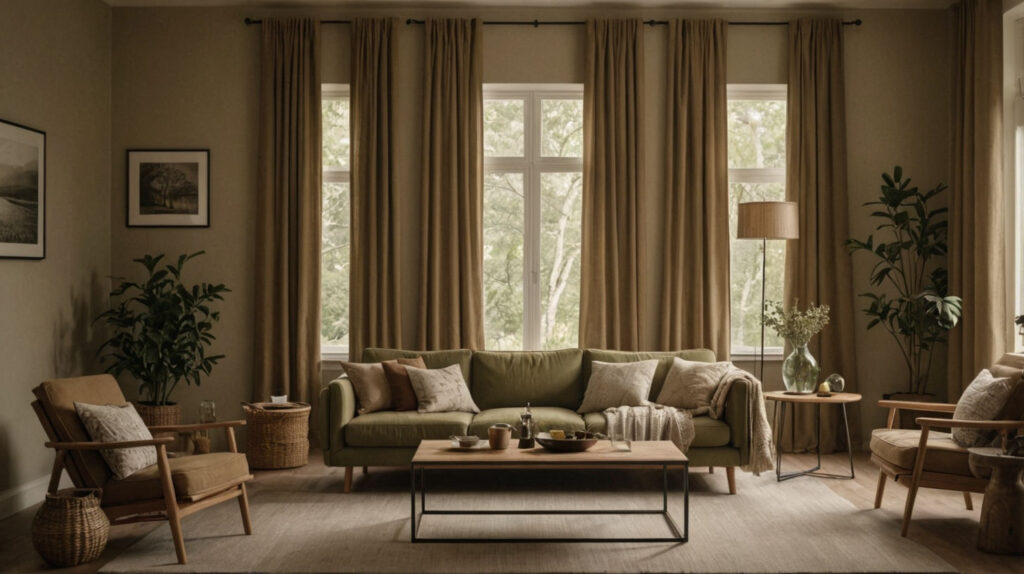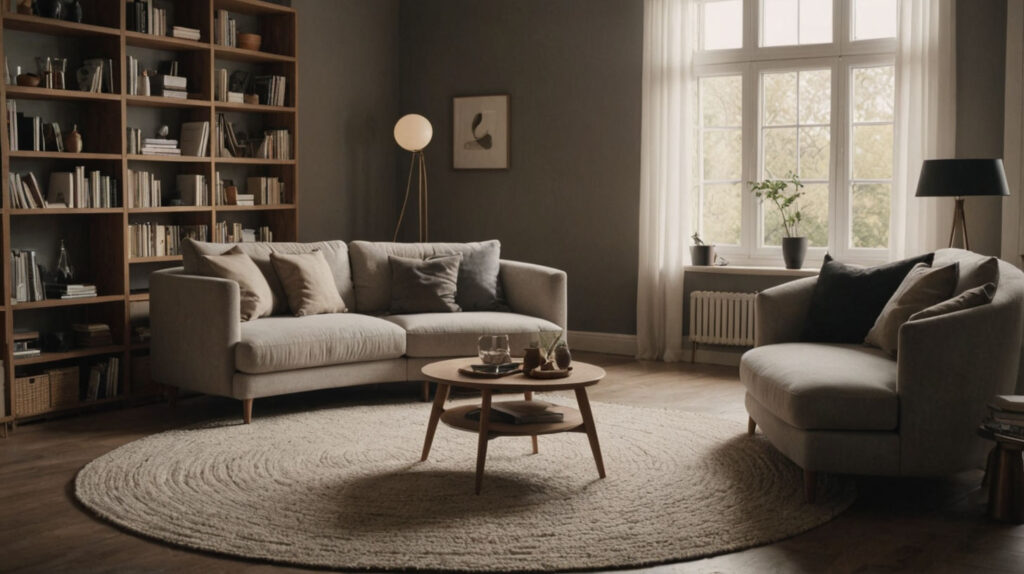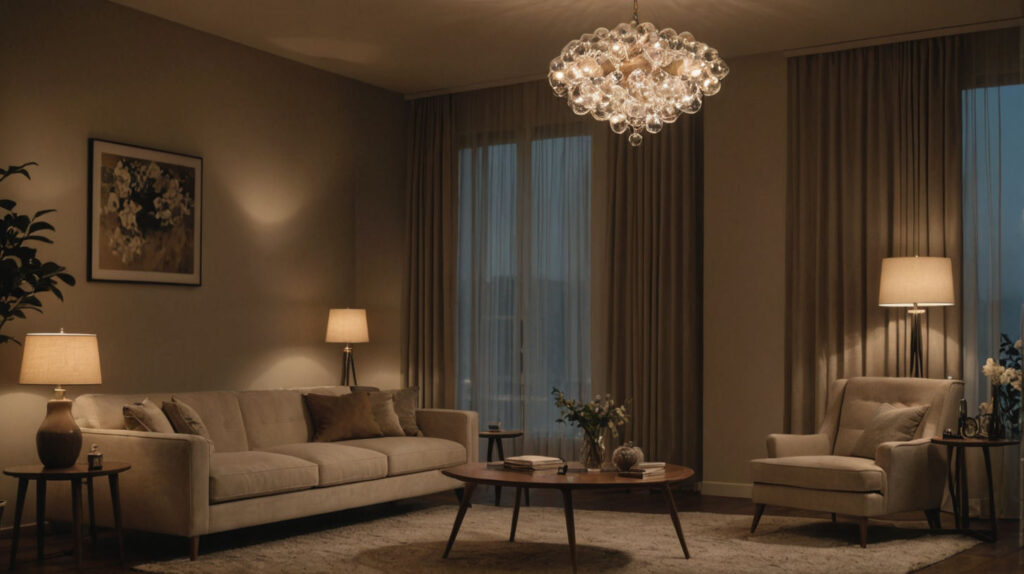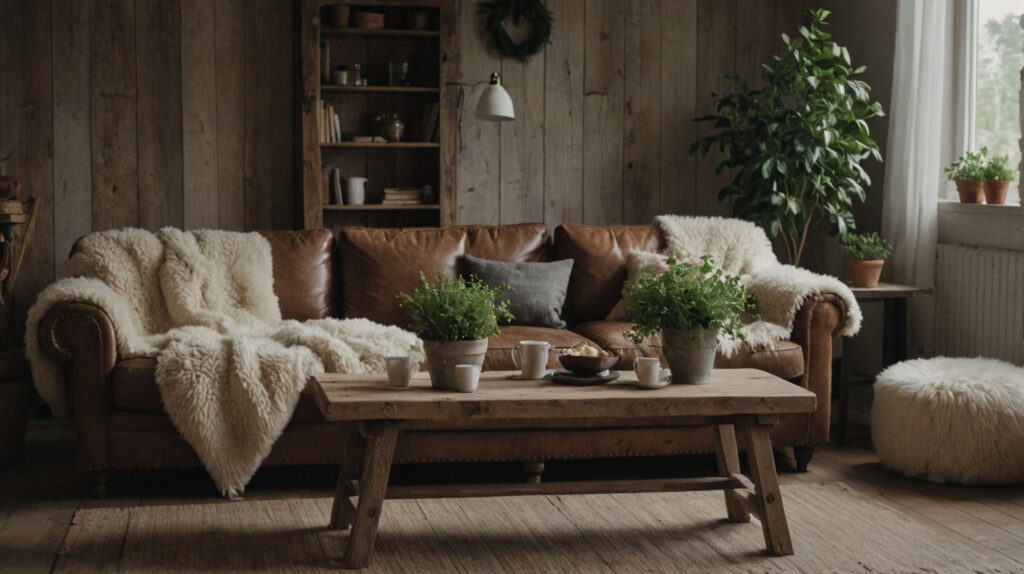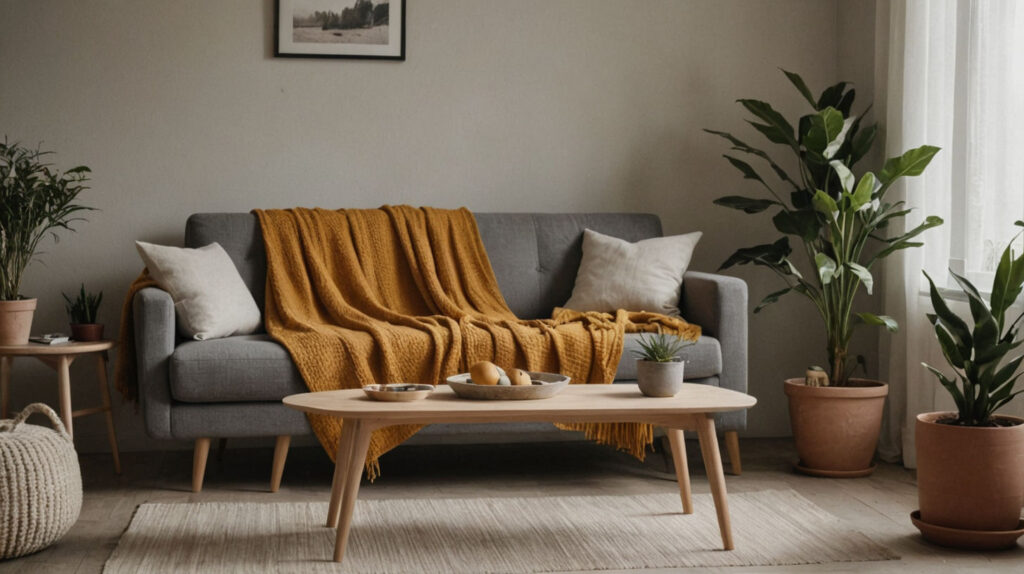Introduction
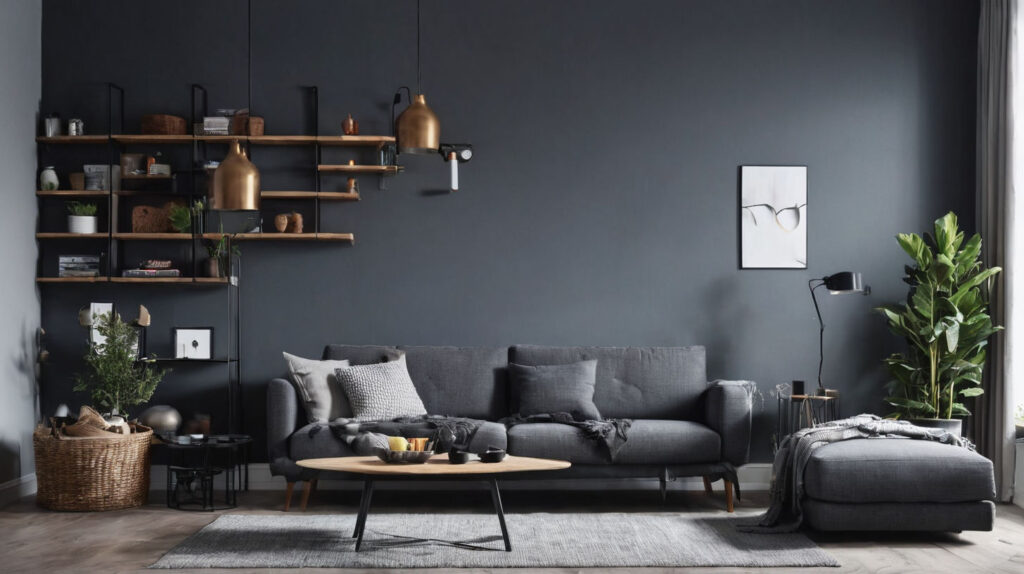
Grey Scandinavian living rooms offer a perfect blend of minimalist design and cozy atmosphere. In this article, we’ll explore how to introduce accent colors that pop against the neutral grey backdrop, transforming your space into a vibrant, yet serene haven. Scandinavian design, known for its simplicity and functionality, provides the perfect canvas for experimenting with color. By carefully selecting and incorporating accent hues, you can create a living room that’s both stylish and inviting. Whether you’re drawn to bold yellows, calming blues, or fresh greens, we’ll guide you through the process of adding personality to your grey Scandinavian space. From furniture choices to lighting techniques, we’ll cover all aspects of creating a harmonious and eye-catching living room that embodies the best of Nordic design principles.
Key Takeaways
– Scandinavian design emphasizes minimalism and functionality.
– Grey serves as a perfect neutral base for versatile design choices.
– Bold accent colors can create striking contrasts and add personality to a grey Scandinavian living room.
Understanding Scandinavian Design
Scandinavian design, originating from the Nordic countries, is characterized by three core principles:
1. Minimalism: The philosophy of “less is more” is central to Scandinavian interiors. Spaces are uncluttered, with each element serving a purpose. This approach creates a sense of calm and order in the living room.
2. Functionality: Every piece in a Scandinavian room is designed with practicality in mind. Furniture and decor are not just aesthetically pleasing but also highly functional, reflecting the pragmatic nature of Nordic culture.
3. Natural elements: Bringing the outdoors in is crucial to Scandinavian design. This is achieved through the use of natural materials like wood, as well as incorporating plenty of plants. Large windows that let in ample natural light are also a key feature.
These principles work together to create living spaces that are not only visually appealing but also conducive to a calm and comfortable lifestyle. The simplicity of Scandinavian design makes it highly adaptable, allowing for easy incorporation of personal touches and accent colors. By understanding these fundamental aspects, you can create a grey Scandinavian living room that is both true to its design roots and uniquely yours.
Why Choose Grey for Your Scandinavian Living Room?
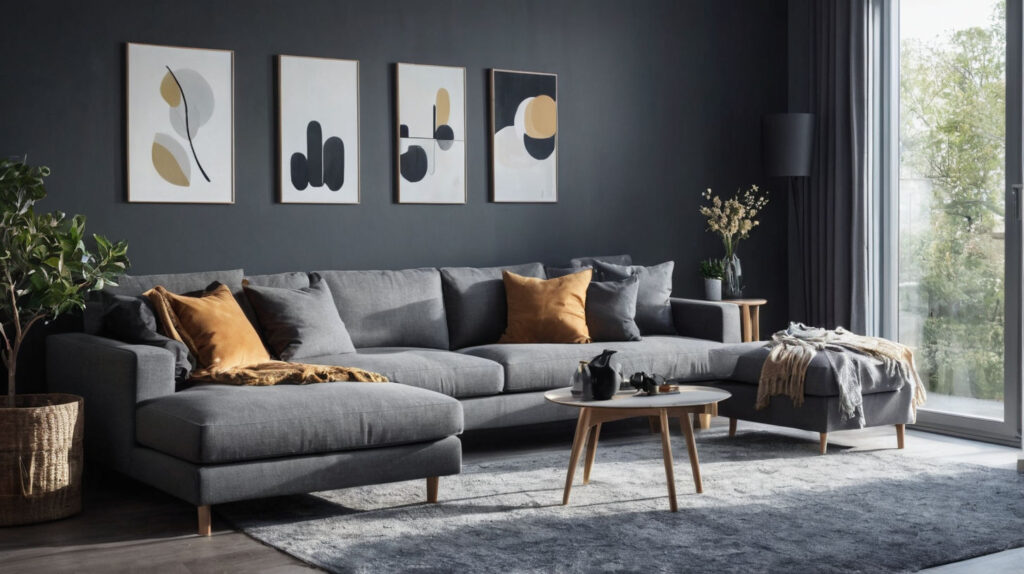
Grey has become a popular choice for Scandinavian-inspired interiors, and for good reason. This versatile hue offers several advantages that make it ideal for creating a serene and stylish living room:
1. Neutral and versatile base: Grey provides a perfect backdrop for a wide range of design choices. Its chameleon-like quality allows it to shift its appearance based on lighting and surrounding elements, making it adaptable to various styles and color schemes.
2. Creates a calm and serene atmosphere: The soothing nature of grey contributes to a tranquil environment, perfect for relaxation after a long day. It can help reduce visual noise and create a sense of peace in your living space.
3. Pairs well with a variety of accent colors: Whether you prefer bold or subtle accents, grey complements virtually any color palette. This flexibility allows you to easily update your room’s look by changing accent pieces without altering the main color scheme.
4. Reflects natural light: Lighter shades of grey can help maximize natural light in a room, a crucial aspect of Scandinavian design. This quality can make your space feel brighter and more spacious.
5. Timeless appeal: Unlike trendy colors that may quickly go out of style, grey has a lasting quality that ensures your living room remains stylish for years to come.
When selecting grey for your Scandinavian living room, consider the room’s size and natural light. Lighter greys can make a small room feel more spacious, while darker tones add depth and coziness to larger spaces. The versatility of grey makes it an excellent choice for creating a Scandinavian-inspired living room that’s both stylish and enduring.
Top Accent Colors That Pop Against Grey
Yellow: Bright and Cheerful
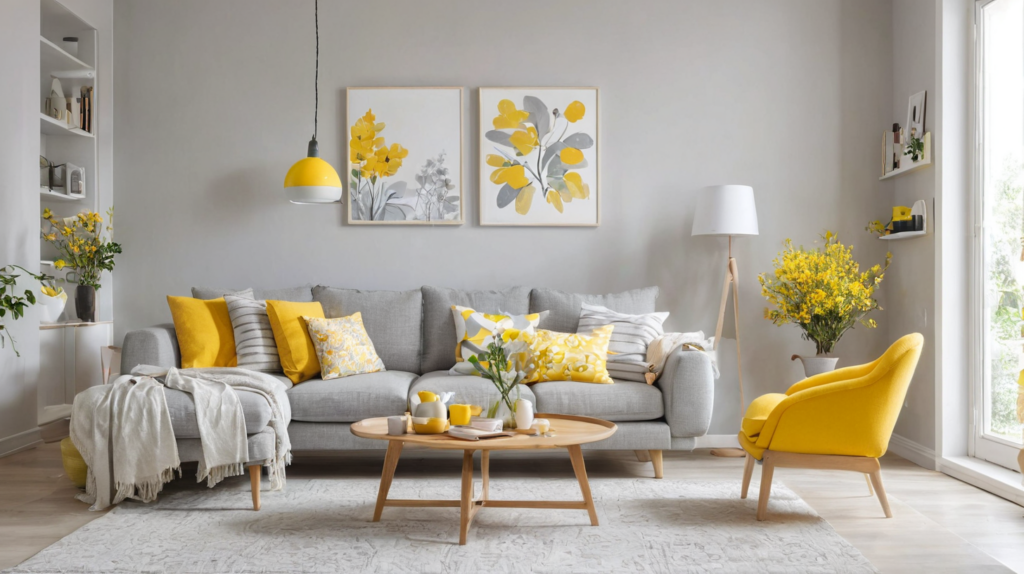
Yellow brings a burst of sunshine into a grey Scandinavian living room, instantly lifting the mood and creating a welcoming atmosphere. This vibrant hue can have a significant impact on both the mood and the perceived space of your room:
– Enhances feelings of happiness and optimism
– Makes the room feel brighter and more energetic
– Creates a striking contrast against cool grey tones
To incorporate yellow accents effectively:
– Use mustard yellow throw pillows or blankets for a sophisticated touch
– Add a statement yellow armchair as a focal point
– Hang yellow artwork or incorporate yellow frames
– Consider yellow curtains or blinds to filter light beautifully
Blue: Calm and Inviting
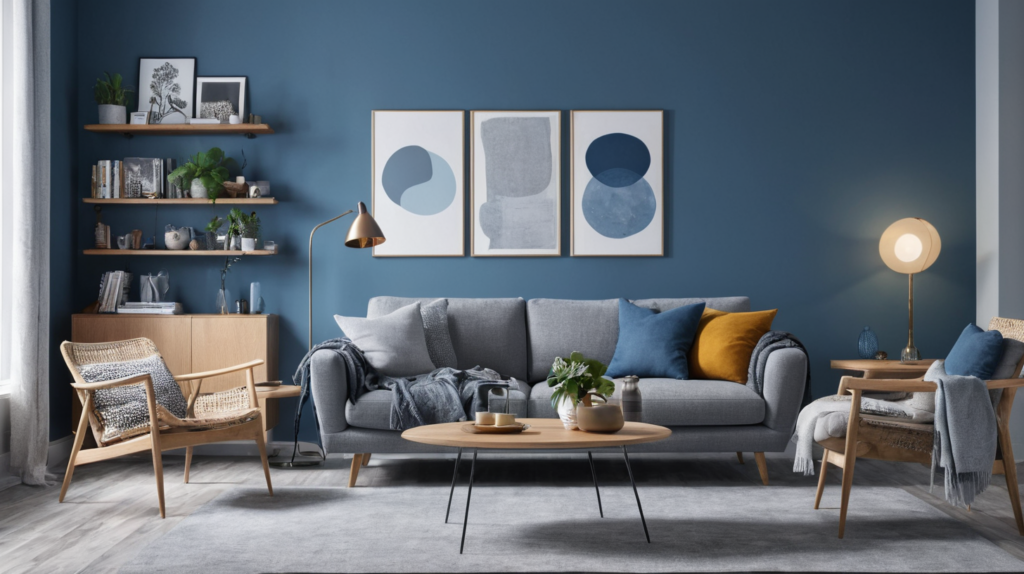
Blue, reminiscent of Scandinavian skies and waters, brings a sense of tranquility to a grey living room. Its versatility allows for various expressions, from bold to subtle:
Different shades and their effects:
– Navy blue: Adds depth and sophistication
– Sky blue: Creates an airy, expansive feel
– Teal: Introduces a unique, eye-catching element
To blend blue accents seamlessly:
– Use blue in larger furniture pieces like sofas or accent chairs
– Incorporate blue through textiles such as rugs, curtains, or throw pillows
– Add blue decorative objects like vases, books, or picture frames
– Consider a blue accent wall for a bold statement
Green: Fresh and Natural
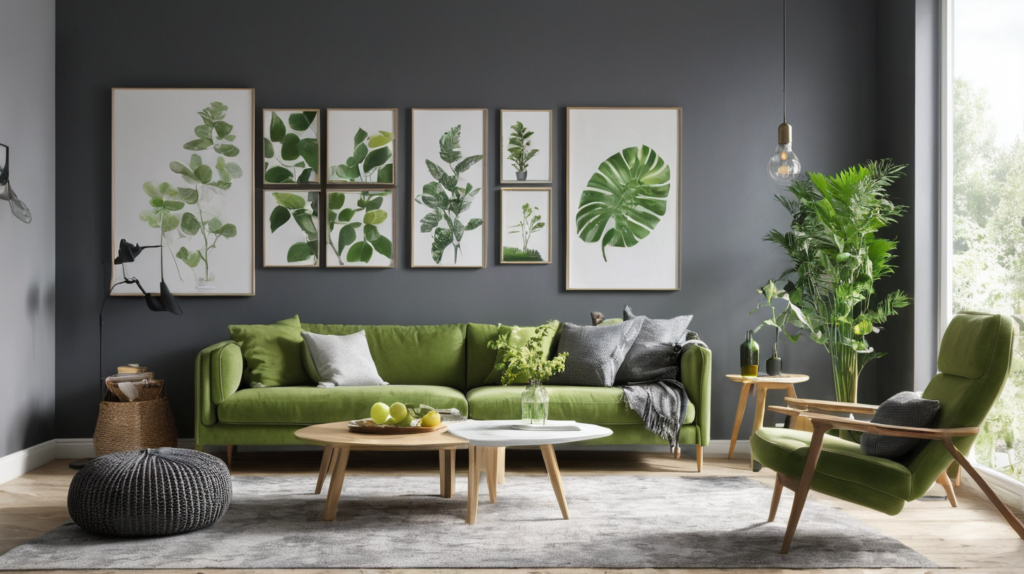
Green accents can bring a fresh, natural feel to your grey Scandinavian living room, connecting the space with the outdoors:
– Adding greenery through plants and decor creates a lively atmosphere
– Use various shades of green to add depth and interest
Best green shades to complement grey:
– Sage green for a soft, earthy touch
– Emerald green for a luxurious feel
– Mint green for a fresh, modern look
Pink: Soft and Elegant
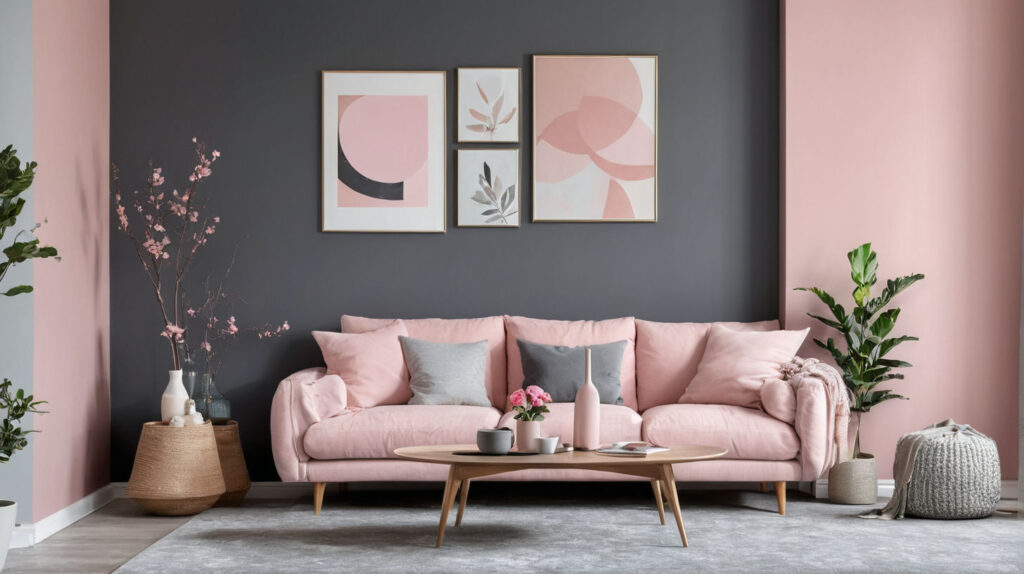
Pink can add a soft, elegant touch to your grey Scandinavian living room:
– Creates a feminine touch without overwhelming the space
– Pairs beautifully with grey for a sophisticated look
Use pink accents in:
– Soft furnishings like cushions and throws
– Artwork or wall hangings
– Small decorative objects or vases
Red: Bold and Passionate
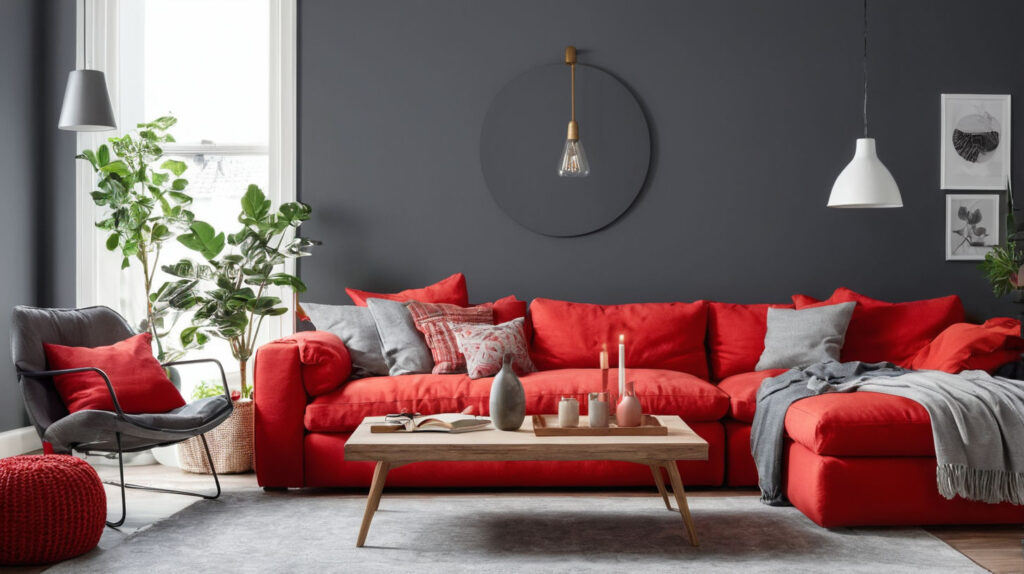
Red accents can make a strong statement in a grey Scandinavian living room:
– Adds energy and warmth to the space
– Creates a focal point and draws the eye
Balance red with grey by:
– Using red in small doses, such as in artwork or a single piece of furniture
– Pairing red with softer greys to avoid overwhelming the space
– Incorporating different shades of red for depth and interest
When combining these accent colors, remember to maintain balance. Use one color as the primary accent and others as secondary accents for a harmonious look. The key is to create contrast while staying true to the minimalist principles of Scandinavian design.
How to Layer Textures and Patterns
Layering textures and patterns is essential in adding depth and interest to a grey Scandinavian living room. This technique prevents the space from feeling flat or monotonous while maintaining the signature Nordic simplicity.
Mixing different materials:
1. Wood: Incorporate wooden furniture or flooring for warmth and a connection to nature. Consider light woods like ash or oak for a traditional Scandinavian look.
2. Metal: Add metallic accents through light fixtures, picture frames, or decorative objects. Brass and copper can add warmth, while chrome and silver offer a cooler, more modern touch.
3. Textiles: Use a variety of fabrics like wool, linen, and cotton. Mix textures such as smooth, rough, and plush to create visual and tactile interest.
Using patterns to add depth and interest:
1. Geometric patterns: Reflect Scandinavian design’s love for clean lines with simple geometric shapes in textiles or wallpaper.
2. Nature-inspired patterns: Bring the outdoors in with subtle leaf or tree motifs on cushions or artwork.
3. Abstract designs: Add a modern touch with abstract patterns while maintaining simplicity.
Examples of texture combinations:
– Pair a sleek leather sofa with a chunky knit throw
– Contrast smooth concrete walls with a plush shag rug
– Mix matte and glossy finishes in decorative objects
Remember, the key is to create contrast while maintaining a cohesive look. Start with larger textured pieces like rugs or furniture, then layer smaller elements like cushions and throws. Be mindful not to overcrowd the space – Scandinavian design values simplicity, so choose your textured elements carefully.
By thoughtfully layering textures and patterns, you can create a grey Scandinavian living room that’s visually interesting and inviting, while still maintaining the clean, uncluttered aesthetic that’s characteristic of Nordic design.
Lighting Tips for a Grey Scandinavian Living Room
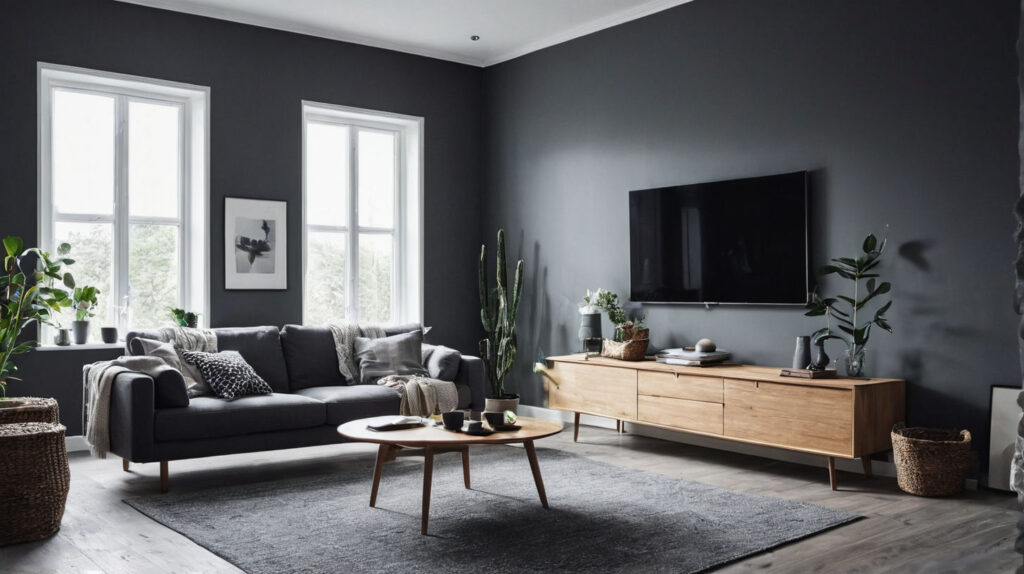
Proper lighting is crucial in a grey Scandinavian living room, not only for functionality but also to enhance the overall ambiance and highlight accent colors. Here are some key tips:
Maximizing natural light:
1. Use sheer curtains or blinds to allow maximum daylight into the room.
2. Position mirrors strategically to reflect light throughout the space.
3. Choose light-colored furniture to bounce light around the room.
Choosing the right artificial lighting:
1. Layer lighting with a combination of ambient, task, and accent lights.
2. Opt for warm-toned bulbs to create a cozy atmosphere, especially important in grey rooms.
3. Consider dimmable lights for versatility and to adjust the mood of the room.
Highlighting accent colors with strategic lighting:
1. Use spotlights to draw attention to colorful artwork or furniture pieces.
2. Place table lamps with colored shades for subtle color infusion.
3. Incorporate LED strip lighting behind furniture for a modern glow and to add depth.
In Scandinavian design, lighting fixtures are often statement pieces themselves. Look for designs that combine functionality with aesthetic appeal, such as the iconic PH lamps by Danish designer Poul Henningsen. Pendant lights over a dining area or coffee table can serve as both functional lighting and artistic elements.
Remember, the goal is to create a well-lit space that feels warm and inviting, even on grey Scandinavian days. By carefully considering both natural and artificial light sources, you can enhance the beauty of your grey backdrop and make your accent colors truly pop.
Decor and Furniture Ideas
When furnishing and decorating a grey Scandinavian living room, the key is to strike a balance between minimalism and comfort. Here are some ideas to help you achieve this:
Selecting minimalist furniture:
1. Choose pieces with clean lines and simple shapes, avoiding ornate designs.
2. Opt for furniture with exposed legs to create a sense of space and airiness.
3. Look for multifunctional pieces, like storage ottomans or extendable tables, to maximize functionality.
4. Consider a mix of classic Scandinavian designs and modern pieces for a timeless look.
Incorporating functional decor pieces:
1. Use wall-mounted shelves for both storage and display, keeping floor space clear.
2. Add a sleek floor lamp that doubles as a sculptural element.
3. Choose decorative items that serve a purpose, like a beautiful carafe for water or a stylish magazine rack.
4. Incorporate natural elements with potted plants or a statement indoor tree.
Using rugs, cushions, and throws for added comfort and color:
1. Layer a colorful rug over a neutral floor for instant warmth and texture.
2. Mix and match throw pillows in different textures and accent colors for visual interest.
3. Drape a soft throw over the sofa or armchair for added coziness and a pop of color.
When selecting decor, remember the Scandinavian principle of “hygge” – the art of creating intimacy and comfort. Each piece should contribute to a sense of well-being and contentment in the space.
Key pieces to consider:
– A comfortable, streamlined sofa in grey or a complementary color
– Iconic Scandinavian chairs, like the Egg Chair or Wishbone Chair
– A simple coffee table with storage options
– Wall art that incorporates your chosen accent colors
– Textured curtains or blinds for softness and light control
By carefully selecting each element, you can create a grey Scandinavian living room that’s both stylish and comfortable, true to the principles of Nordic design.
DIY Ideas for Adding Accent Colors
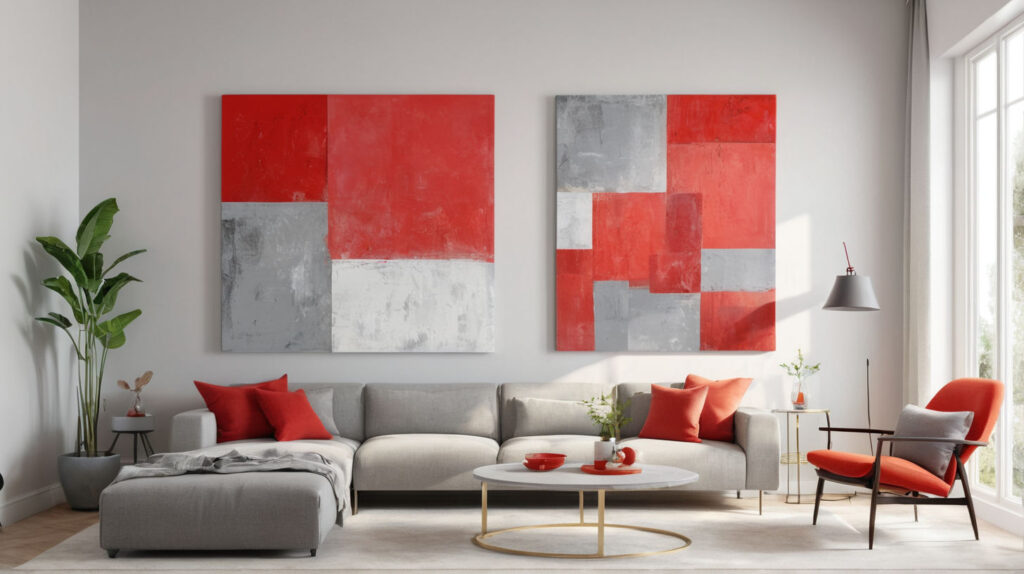
Personalizing your grey Scandinavian living room with DIY projects is a great way to add unique touches of color and express your creativity. Here are some ideas:
Painting accent walls:
1. Choose a bold color like mustard yellow or deep blue for a striking effect.
2. Consider using washable paint for easy updates in the future.
3. Try color blocking for a modern, artistic look.
4. Use painter’s tape to create geometric patterns on a grey wall.
Upcycling old furniture with new colors:
1. Paint wooden chairs in pastel hues for a fresh look.
2. Update lamp bases with metallic spray paint.
3. Reupholster an old armchair in a vibrant fabric.
4. Transform a plain side table with a colorful epoxy resin top.
Creating custom artwork:
1. Make abstract paintings using your chosen accent colors.
2. Create a gallery wall with colorful prints and personal photos.
3. Craft macramé wall hangings with colored rope.
4. Design and print your own fabric for cushion covers.
Additional DIY projects:
– Paint plant pots in coordinating colors for a cohesive look.
– Create a colorful pegboard for organization and display.
– Make your own woven wall hanging using accent colors.
– Customize picture frames with paint or washi tape.
These DIY projects not only add personal flair to your space but also align with the Scandinavian value of sustainability by repurposing and creating rather than buying new. Remember to keep the overall look clean and uncluttered, focusing on a few impactful pieces rather than numerous small additions.
Common Mistakes to Avoid
When designing your grey Scandinavian living room, be aware of these common pitfalls:
1. Overdoing the accent colors:
– Stick to one or two main accent colors to maintain a cohesive look.
– Use the 60-30-10 rule: 60% dominant color (grey), 30% secondary color, 10% accent color.
2. Ignoring the balance between functionality and aesthetics:
– Ensure that beautiful pieces also serve a purpose.
– Don’t sacrifice comfort for style – choose furniture that’s both attractive and comfortable.
3. Choosing the wrong shades that clash with grey:
– Test color combinations before committing to ensure harmony.
– Consider the undertones of your grey (warm or cool) when selecting accent colors.
4. Cluttering the space with too many decorative items:
– Remember that Scandinavian design values simplicity and open space.
– Curate your decor carefully, focusing on quality over quantity.
5. Neglecting to incorporate natural elements:
– Include plants, wooden elements, and natural textiles to soften the look.
6. Choosing furniture that’s too large for the space:
– Opt for appropriately scaled pieces to maintain an airy feel.
7. Forgetting about texture:
– Incorporate various textures to add depth and interest to the monochromatic base.
By avoiding these mistakes, you’ll create a living room that truly embodies the essence of Scandinavian design – beautiful, functional, and inviting.
FAQs
Q: What are the best accent colors for a grey Scandinavian living room?
A: Bright colors like yellow, blue, green, pink, and red work well. Yellow brings warmth and cheer, blue adds calmness, green introduces a natural element, pink offers softness, and red provides a bold statement. Choose colors that resonate with your personal style and complement the specific shade of grey in your room.
Q: How do I maintain a minimalist look with accent colors?
A: Choose a few bold pieces and keep the rest of the decor neutral. Focus on quality over quantity, selecting statement pieces that incorporate your accent colors. Use color strategically in smaller elements like cushions, artwork, or vases, allowing the grey backdrop to maintain its minimalist appeal.
Q: Can I mix different accent colors in one room?
A: Yes, but ensure they complement each other and don’t overwhelm the space. Stick to a primary accent color and use others as secondary accents. Consider using the color wheel to find complementary or analogous color schemes. Remember, the goal is to enhance the grey backdrop, not compete with it.
Summary
Creating a grey Scandinavian living room with pops of accent color is an exercise in balance and personal expression. By understanding the principles of Scandinavian design and the versatility of grey, you can craft a space that is both serene and vibrant. Remember to layer textures, incorporate natural elements, and use lighting strategically to enhance your chosen accent colors.
Whether you opt for the cheerful warmth of yellow, the calming influence of blue, or a combination of hues, your accent colors should reflect your personality while complementing the minimalist grey backdrop. By avoiding common mistakes and focusing on the harmony between functionality and aesthetics, you’ll create a living room that is not only visually stunning but also comfortable and inviting.
Embracing the Scandinavian approach to design means creating a space that supports your wellbeing and reflects your lifestyle. With these tips and ideas, you’re well-equipped to transform your grey Scandinavian living room into a personalized haven that balances tranquility with vibrant accents. Remember, the key is to maintain simplicity while infusing your space with colors that bring you joy and comfort.
As you embark on your design journey, don’t be afraid to experiment and adjust until you find the perfect balance. The beauty of a grey Scandinavian base is its flexibility, allowing you to easily update your accent colors as your tastes evolve. By thoughtfully incorporating color, texture, and light, you’ll create a living room that’s not only a testament to timeless Scandinavian design but also a true reflection of your personal style.
